The post 10 Things to Do in Barcelona in the Winter appeared first on The Expeditioner Travel Site.
]]>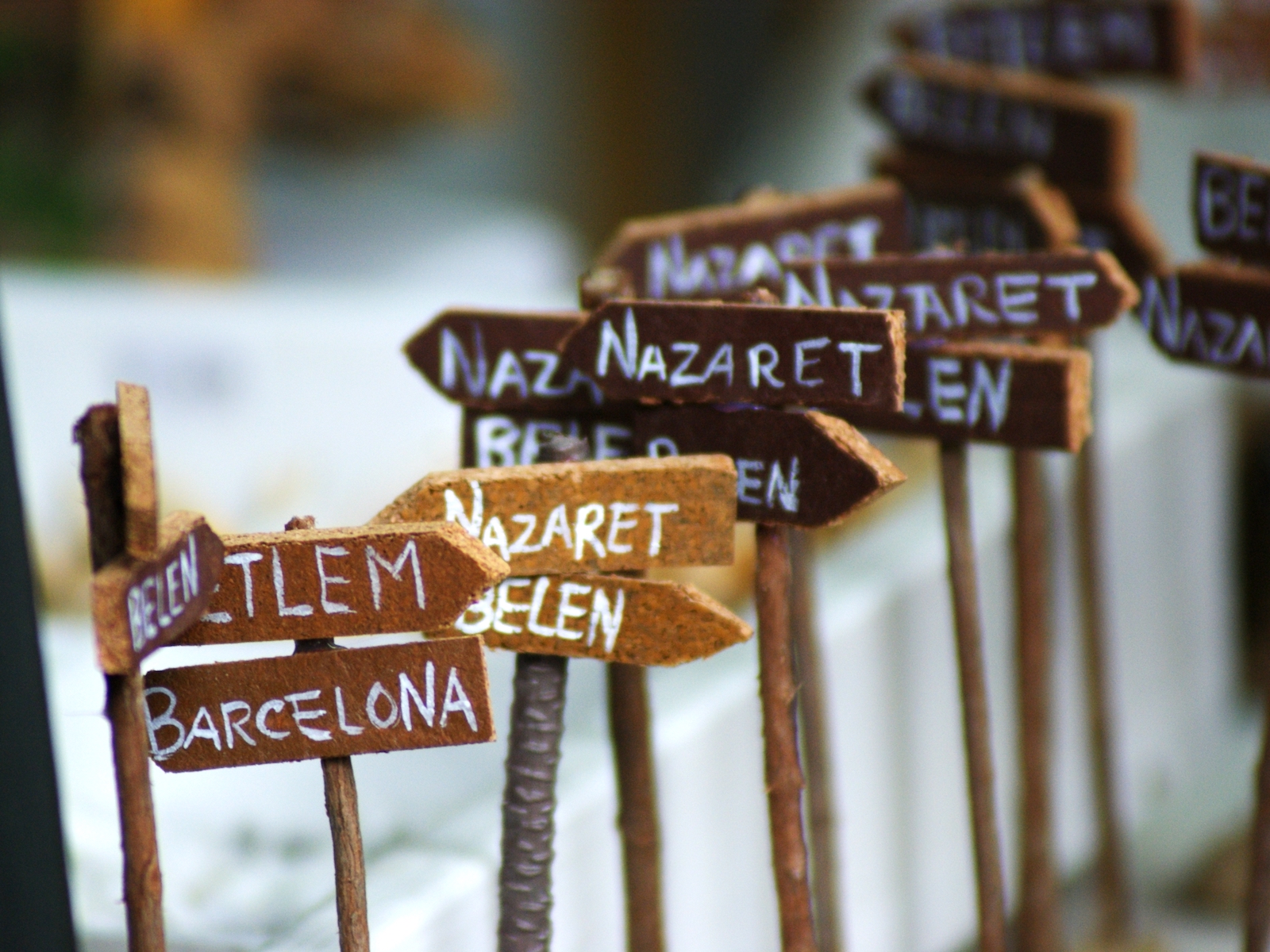
Are you looking for things to do in Barcelona this winter? You may think of Barcelona as a summer destination, but except for the beach, the city doesn’t change much between seasons. In fact, the offseason in the Catalan capital has its own unique appeal. In the winter months, the tourist hordes go home and the city is friendlier and more laid back.
Popular destinations that are overrun during the summer turn calm and more authentic come winter, with the added touch of holiday festivities. Whenever you visit Barcelona, you’re pretty much guaranteed to have a good time.
To help you get started, here are 10 things to do in Barcelona that are particularly fun to do in winter.
1) Visit a Christmas Market
It wouldn’t be winter in a European city without a Christmas market and Barcelona doesn’t disappoint. There are two big Christmas markets located in front of the two main cathedrals, the Sagrada Familia and the Cathedral of Barcelona. The markets are pretty much identical, so don’t feel like you have to go to both. Unlike Christmas markets in the north of Europe, Barcelona doesn’t get that cold, so you can linger without fear of frostbite. Grab a warm drink and get your Christmas shopping done, Catalan-style.
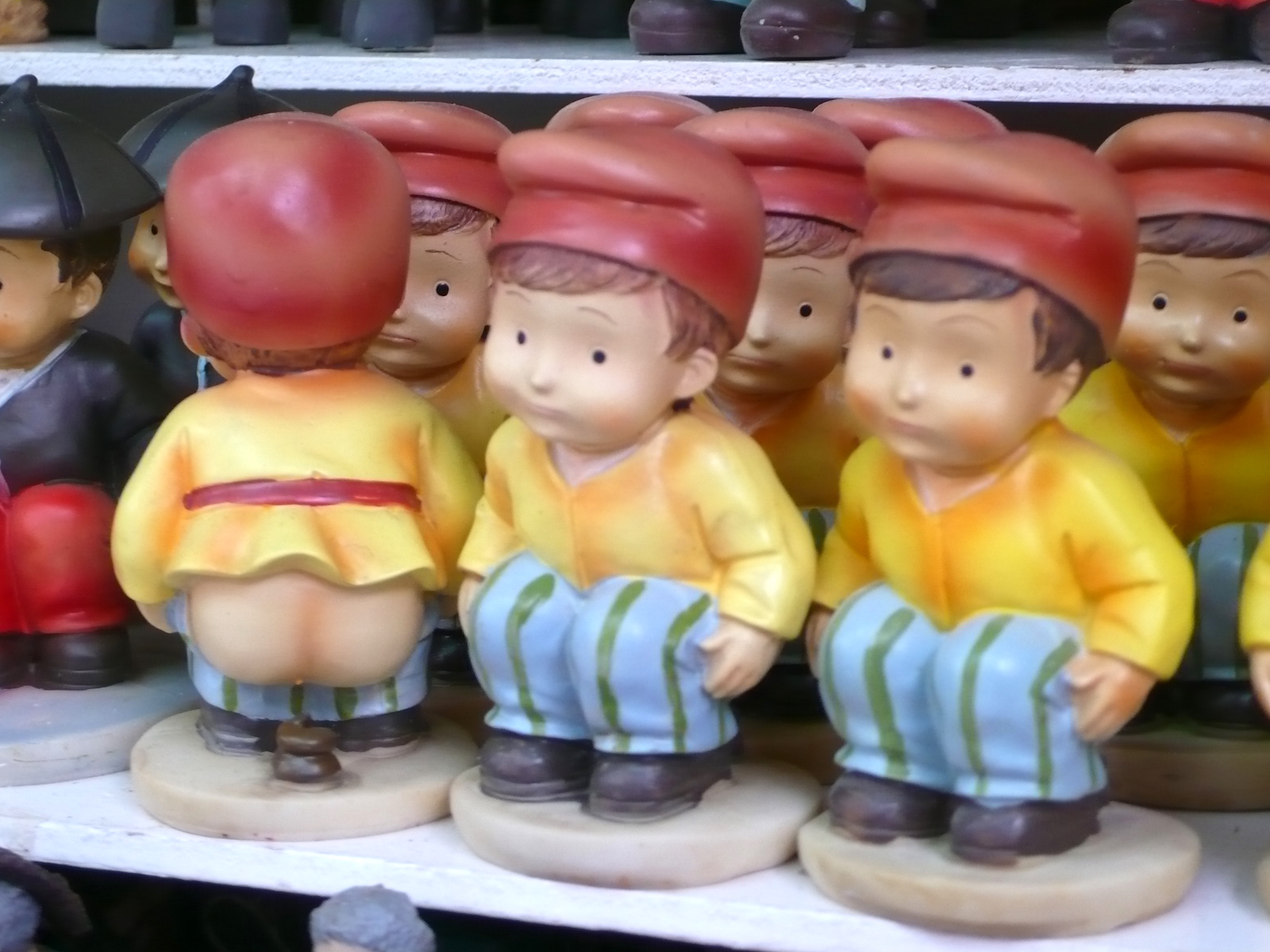
2) Buy Pooping Christmas Statue
Speaking of Catalan Christmas, there are some unique traditions here you should know about. For example, it’s a local tradition to give small statues of people pooping for the holidays. All over the city, and especially at the Christmas markets, you’ll find these statues of people pooping for sale. The statues are called caganers, which quite literally translates to “poopers” in Catalan. The traditional caganer features a Catalan man in a red hat squatting over a pile of poo. These days you’ll also find all sorts of famous people with their pants around their knees. Bonus points if you manage to slip one into a nativity scene when you get home.
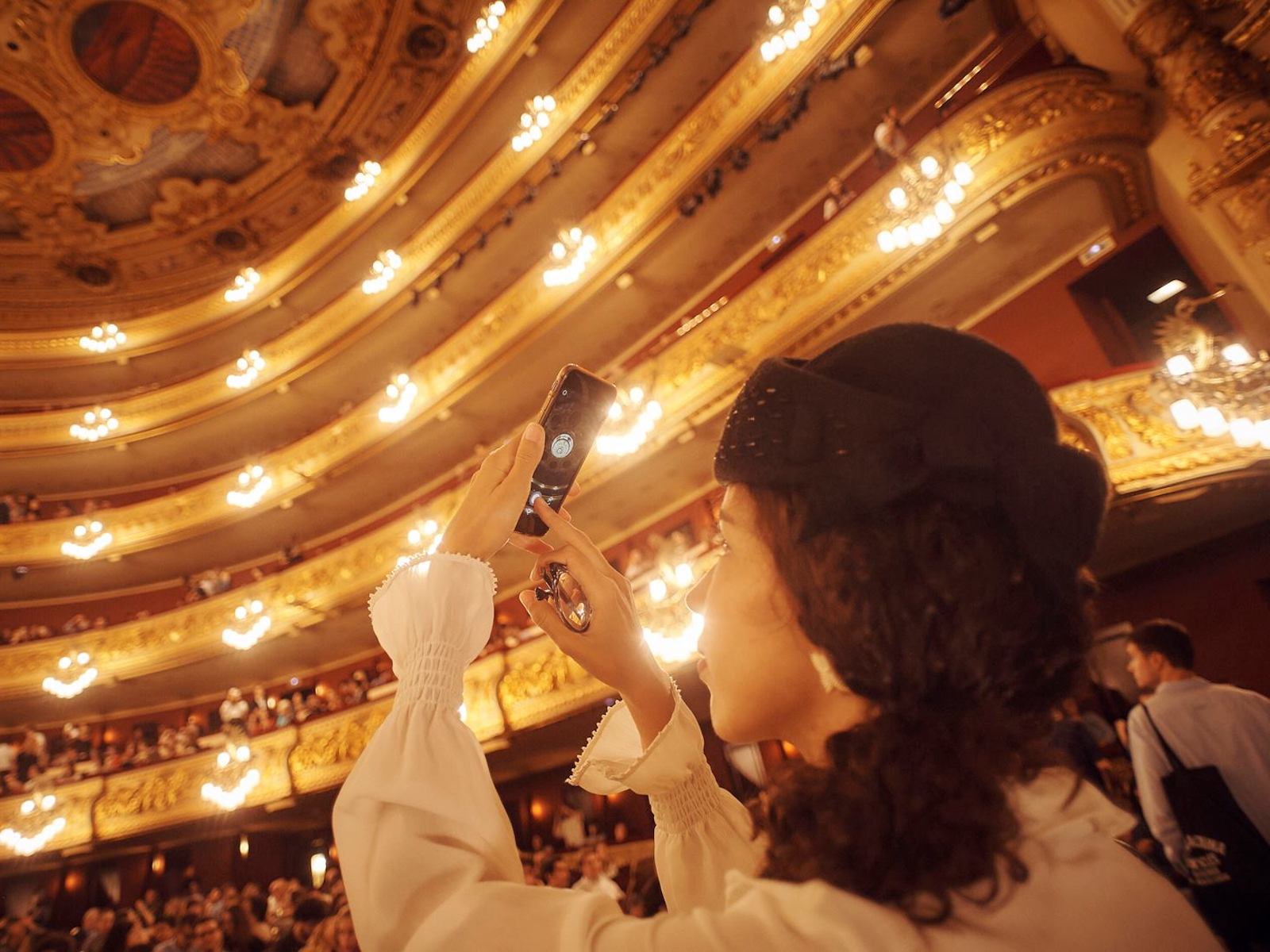
3) Catch a Show
Barcelona is home to the Liceau, one of Europe’s most prestigious opera houses, which puts on popular shows throughout the year. The Liceu dates back to 1847 and the building itself is worth a visit, even if you’re not into opera. Across town, the Palau de Música Catalana is equally stunning and offers a variety of musical performances. Both put on holiday shows, and while tickets aren’t cheap, the performances don’t disappoint. Whichever performance you choose to pick, you’d be wise to buy tickets beforehand. Plan ahead and dress to impress.
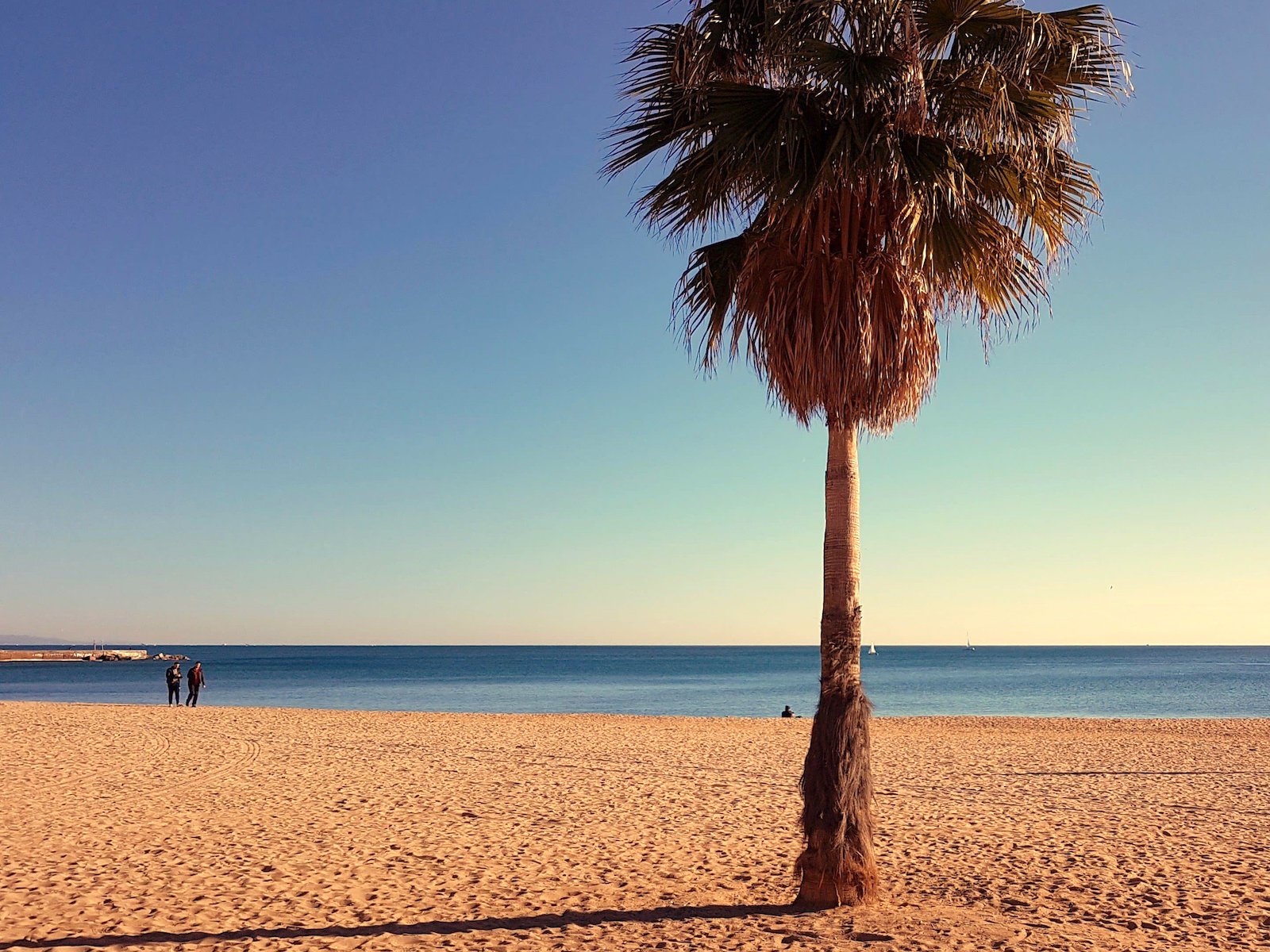
4) Play in the Ocean
Sure, the water is a lot warmer in August, but even in December, the Mediterranean is still pretty mild by North American standards. The winter chill puts a stop to the city’s sun worshipers, but water sports remain popular year round. Walk along the beach you’ll find a ton of places happy to rent you a wetsuit and any sort of aquatic sports gear you might want to play with. If you get lucky, you might visit on one of the rare days where a storm pushes in surfable waves. If not, windsurfing, kayaking and standup paddleboarding are all available.
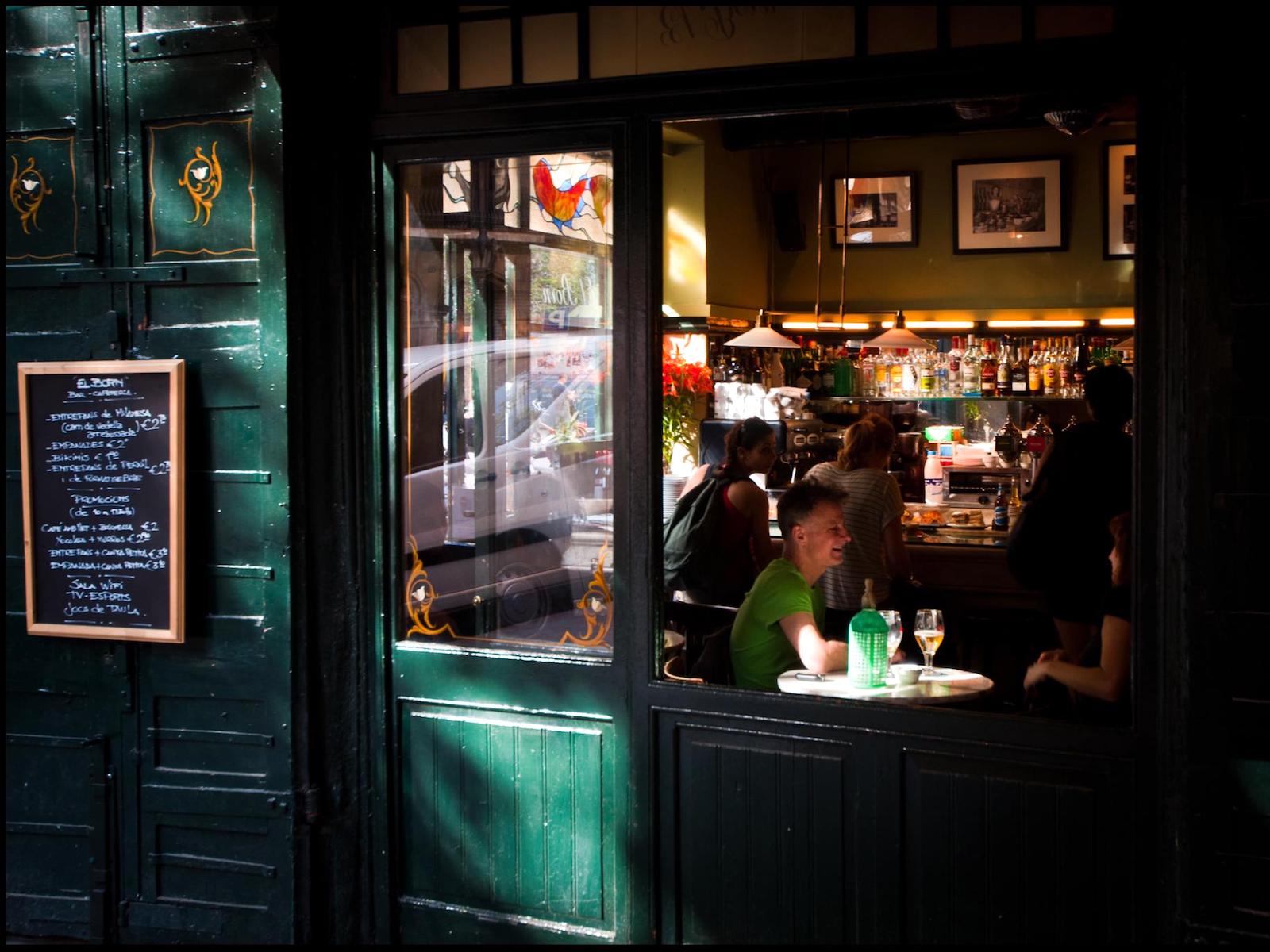
5) Drink the Day Away at a Sidewalk Cafe
Barcelona’s cafe culture is one of its big draws. Practically every street and absolutely every public square are filled with sidewalk cafes. It often feels like the entire city has breakfast, lunch, dinner and evening drinks outside. When the temperatures start to dip, many cafes pull out industrial heaters, blankets and sometimes even tents. No self-respecting Catalan would ever cede their outdoor seating to the weather. Pull up a chair, cozy up with a blanket, order a bottle of wine and watch the day slip by.
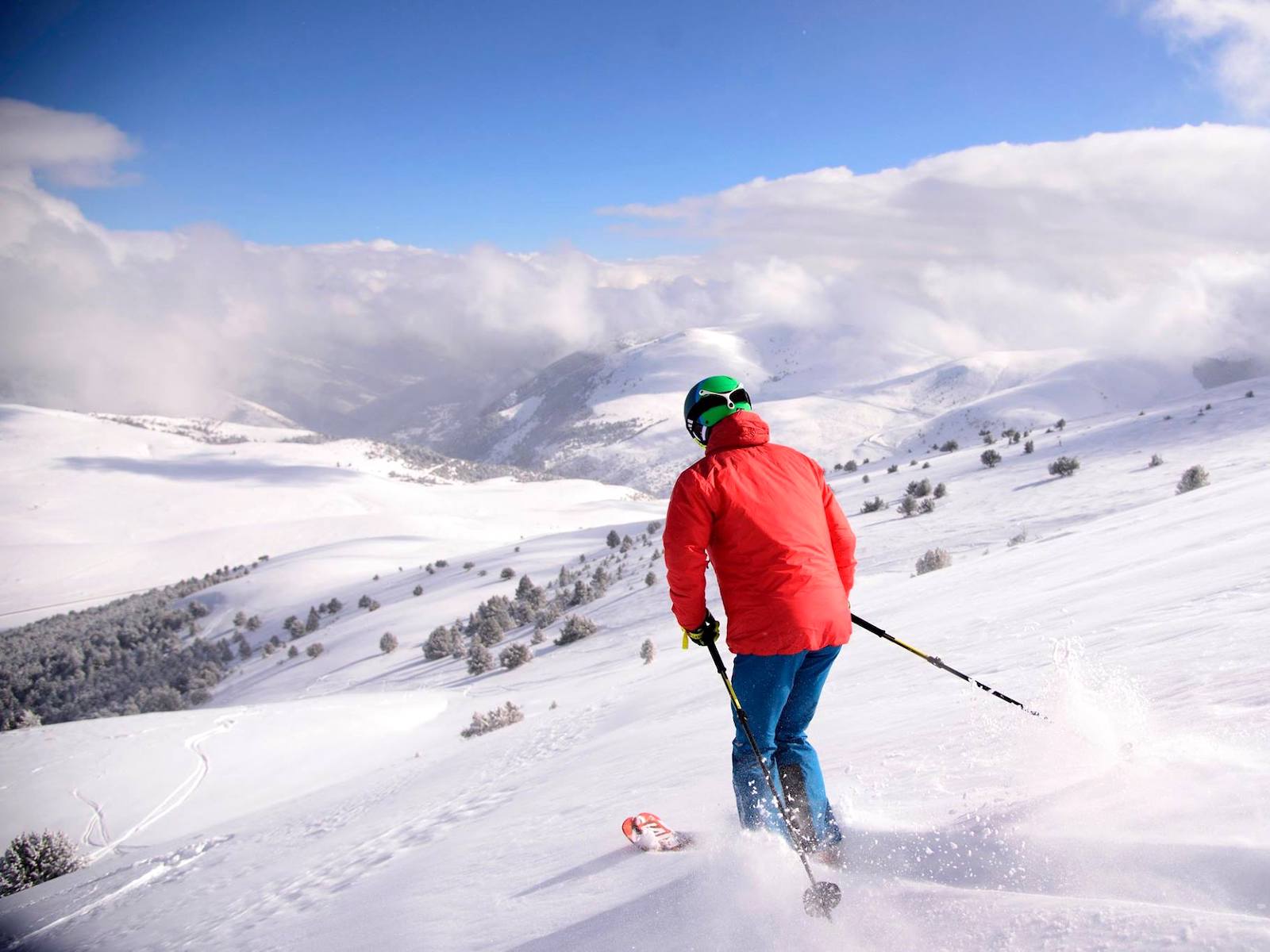
6) Head to the Slopes
You can almost see the snow-capped peaks of the Pyrenees from the beach. There are at least 14 ski resorts within a 3-4 hour drive of Barcelona offering some of the best skiing you’ll find in Europe. The resorts of Masella, La Molina and Grandvalira are all accessible via public transportation. While they’re close enough to make a long day trip feasible, you’d be better off doing an overnight if possible. If you do head to a resort in Andorra, don’t forget your passport.
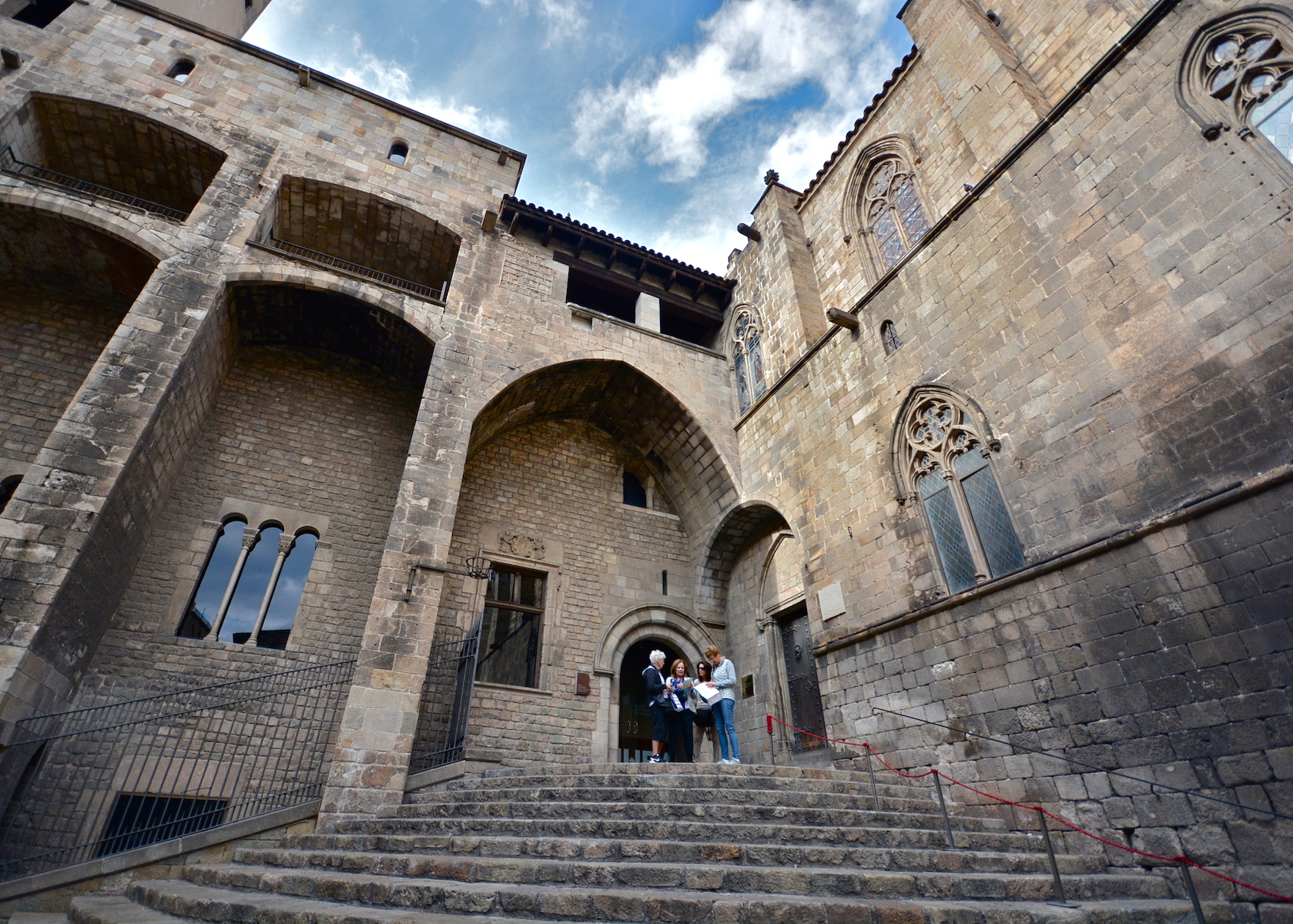
7) Enjoy the Gothic Quarter
Barcelona gets mobbed in late June, July and especially August. Businesses close, locals rent out their apartments and flee the city in mass. This leaves especially popular neighborhoods like Gotica (the Gothic Quarter) feeling more like Disneyland than Barcelona. During the winter months, the neighborhood springs back to life and is one of the most charming areas of the city. Get lost in the area’s winding streets, do some shopping or plop down in a square for a beer.
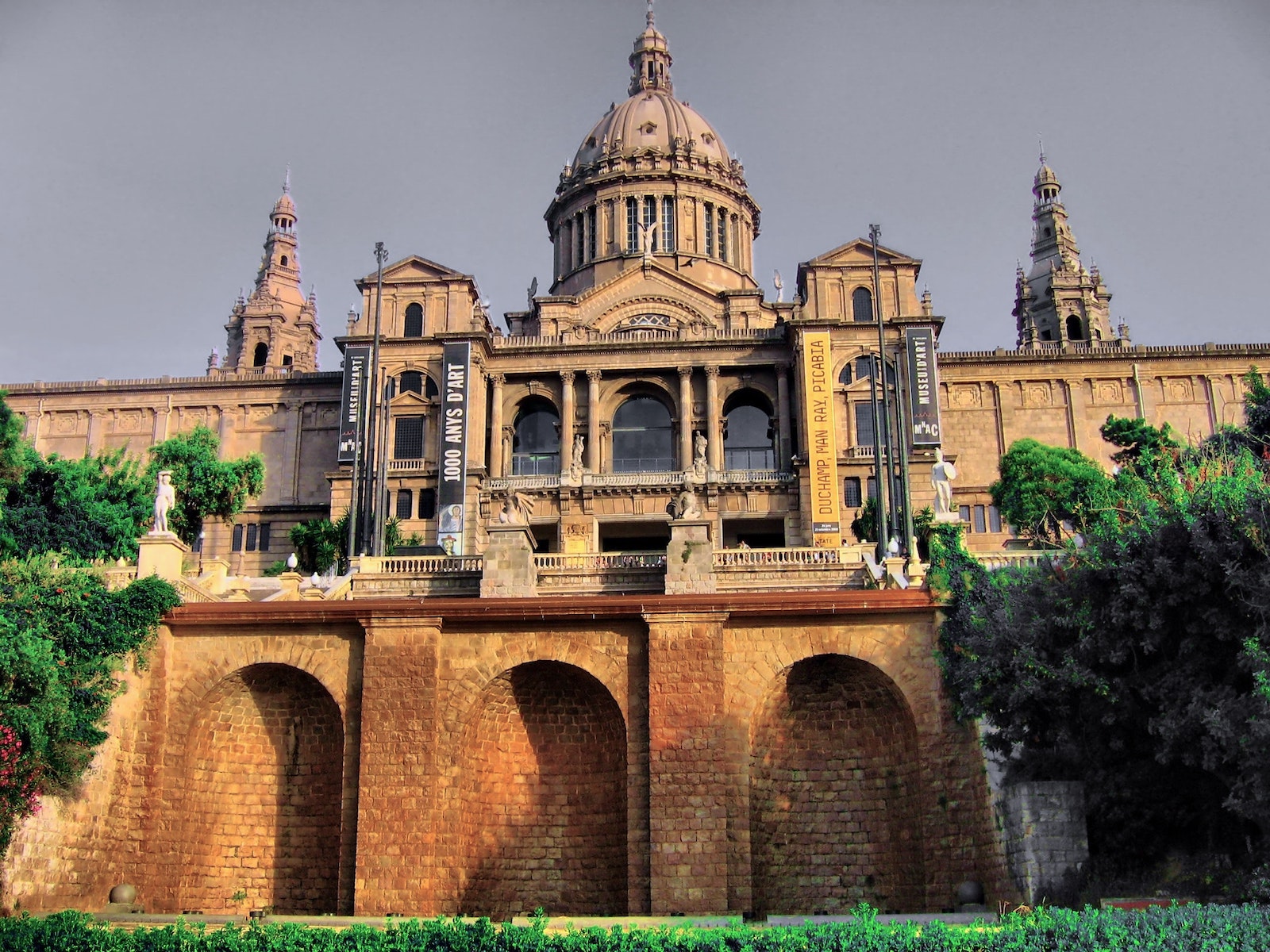
8) Head to a Museum
As the streets thin out, so too do crowds at popular museums. Tickets to the Picasso Museum, a main stop for any visitor who reads their guidebook, are easy to come by in the winter. The Sagrada Familia is busy year round, but there are fewer busloads of tours in the winter. The National Art Museum, Parque Guell and the Maritime Museum are all solid bets in the offseason as well.

9) Celebrate Three Kings Day
Spain doesn’t do Christmas, at least not like the United States. The big day of the holiday season is Three Kings Day on January 6th, when children open their presents. On the night of the 5th, children leave their shoes by their doors, hoping that the three kings will fill them with presents. Processions fill the streets and bakeries do brisk business in ring-shaped cakes, which bakers decorate to look like a king’s crown. If you do buy a cake, chew carefully as they almost all have a small baby Jesus baked inside. If you happen to get the slice with Jesus in it, tradition dictates that you’re in for a good year. Just don’t swallow him or you’re in for a rough couple of days.
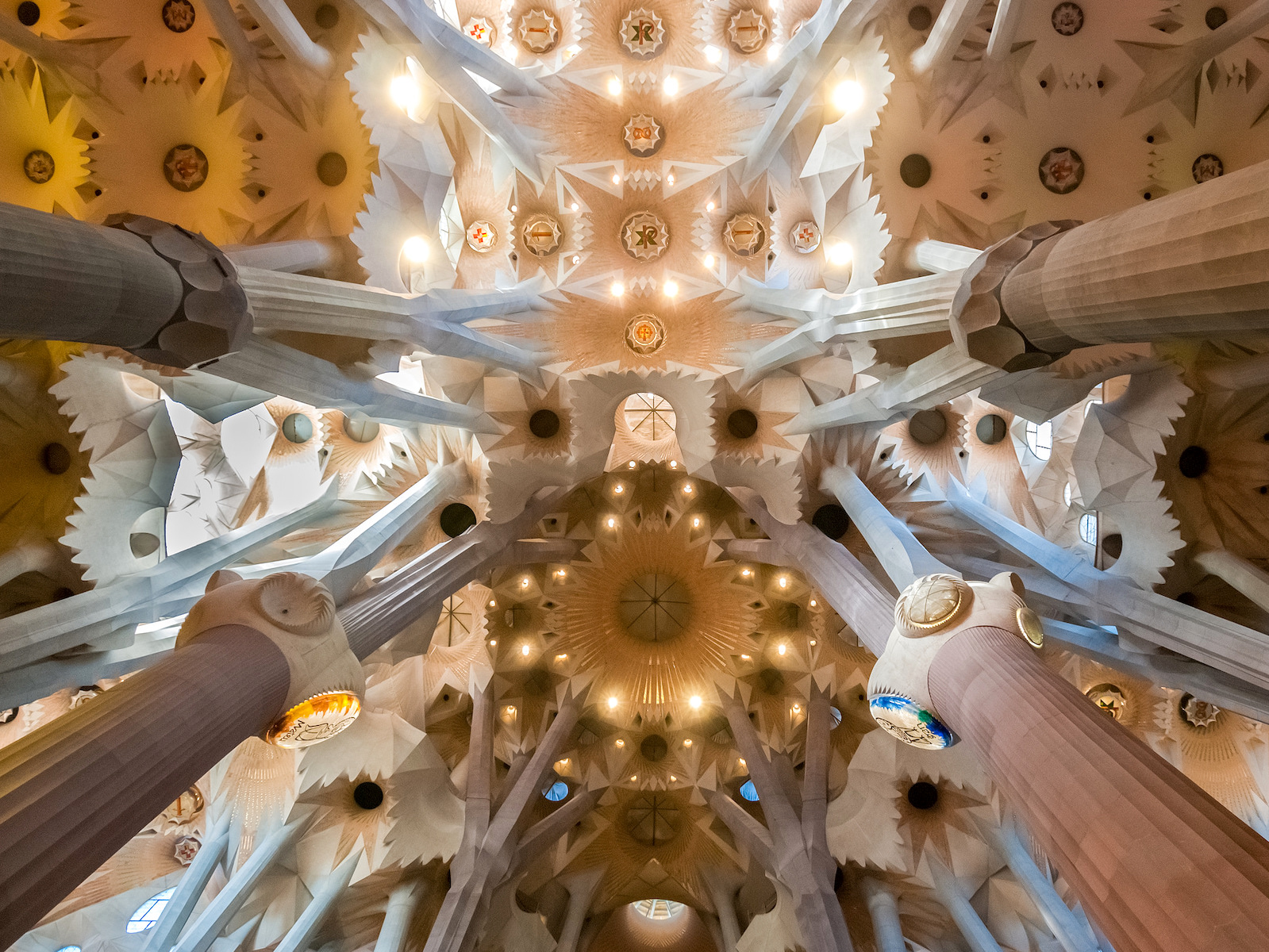
10) Go to Church
Even if you’re not religious, Barcelona’s cathedrals are awe-inspiring and even more so during religious holidays. If you can get tickets, the Sagrada Familia holds mass on Sundays and most religious holidays. Check their website for details, as space is limited. If you can’t get in there, the Cathedral of Barcelona and the Santa Maria del Mar Cathedral seem to hold mass daily, if not multiple times a day. When you go, be respectful: dress conservatively, keep quiet and put your camera away.

/
 Anthony is a Barcelona-based writer and photographer focusing primarily on travel and technology. Originally from the US, he’s always up for a trip somewhere fun. If he’s not on the road you’ll likely find him hunting the streets of Barcelona for somewhere weird and unique.
Anthony is a Barcelona-based writer and photographer focusing primarily on travel and technology. Originally from the US, he’s always up for a trip somewhere fun. If he’s not on the road you’ll likely find him hunting the streets of Barcelona for somewhere weird and unique.
The post 10 Things to Do in Barcelona in the Winter appeared first on The Expeditioner Travel Site.
]]>The post Top 5 Day Trips From Barcelona appeared first on The Expeditioner Travel Site.
]]>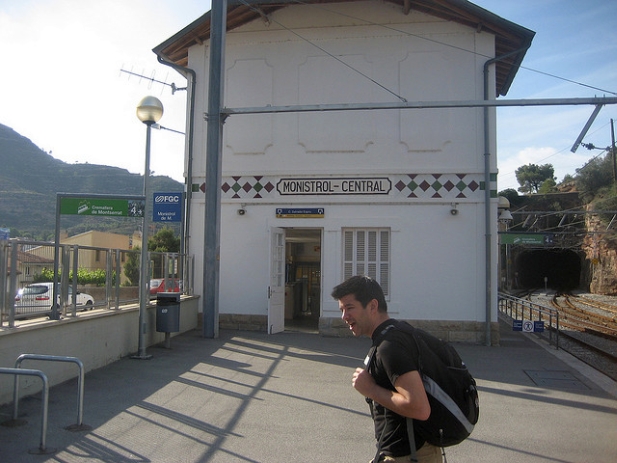
Spending time in Barcelona is an exhilarating experience. The city is a culture lover’s dream, offering countless unique experiences under the Mediterranean sun. However, spending your time solely in Barcelona can leave you yearning to explore the other possibilities in the region. In fact, Catalonia has a wealth of places to visit just a few hours away in all directions. Here are five options to satisfy your wanderlust while in the Catalan capital.
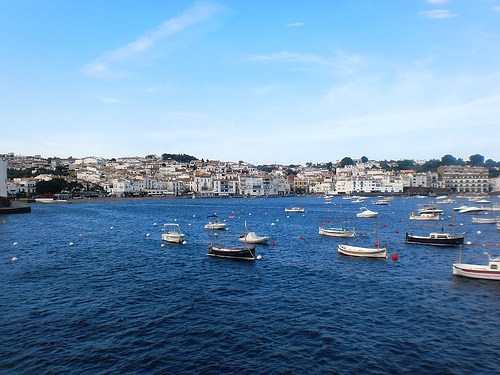
1) Cadaques
Up the Mediterranean coast just two hours from Barcelona is the untouched and unspoiled sun-bleached fishing village of Cadaques, believed to be the inspiration behind the works of Salvador Dali. The village is surrounded by a national park isolating it from the world outside. Cadaques has a winter wind that blows through its narrow streets known as the “Tramontana” which is believed to be so unrelenting and vicious that it has been known to cause acute madness.
Such was its effect that in the late 1800’s, the population uprooted and left to live in Cuba and other parts of Latin America. Later, the village became a refuge for artists and a popular celebrity beach hangout, attracting such people as Walt Disney and Pablo Picasso. In an even more bizarre twist to the history of this village, a Chinese developer has recently decided to build a replica of Cadaques house-by-house as part of a holiday resort in Xiamen Bay facing Taiwan.
How to Get There
Due to Cadaques´s remoteness, there is no train station. You can take the train from Barcelona to Figueras or Rosas and a bus from there through the winding roads of the national park. Alternatively, a ferry leaves from Rosas just a little way down the coast. You can also walk the nine miles from Rosas with a marked route as the locals used to do in bygone days.
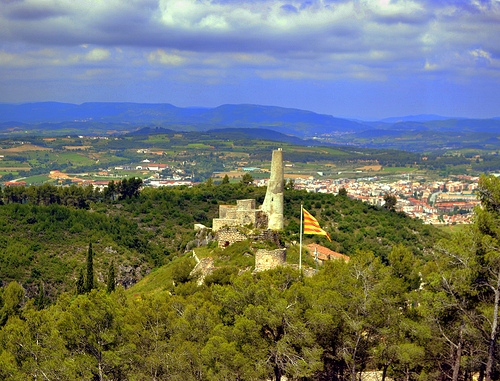
2) Montserrat and El Penédes
Whether traveling from Barcelona by train or car, the outcrop of Montserrat’s sedimentary rock emerges over the horizon like something out of Lord of the Rings. Montserrat — “Serrated Mountain” in Catalan — was once believed to be the resting place of the Holy Grail, secretly stashed away in the Santa Maria de Montserrat Benedictine Abbey. There are two ways to get to the Abbey from ground level: the Aeri de Montserrat cable car, which provides breathtaking views of the mountain from above; and the Cremallera Funicular. For a 360-degree view of the surrounding area and out into the Penédes wine valley, hike to the the tubular-shaped peak of Sant Jeroni.
The wine region of Penedès expands from the Serralada mountain range to the Mediterranean Sea, and has been a hub of wine production since the 9th Century. The area is also a very important Cava producing region, with 66 separate producers, rivaling that of Champagne from France. Two well-known producers of cava in the region are Frexienet and Cordorniu who have had worldwide success, producing in excess of a million bottles of Cava every year. Both offer tours of the vineyards with wine tastings and food pairings.
How to Get There
Trains from Barcelona (R5) leave every hour stopping at the two Montserrat stations, Aeri Montserrat for the cable car and Montserrat for the Funicular.
Taking a train from Barcelona will take you directly to the village where the bodegas are located within the village of Sant Sadurni d’Anoia.
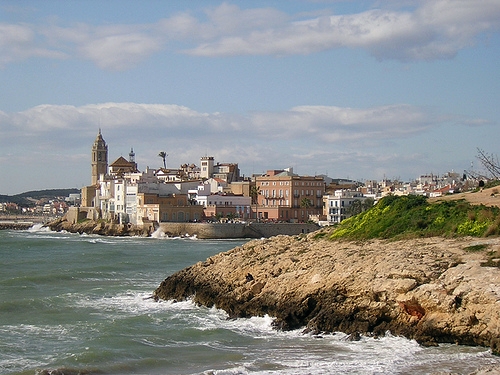
3) Sitges
Located on the Costa de Garraf situated just 20 miles from Barcelona, Sitges was traditionally a small remote fishing village between Barcelona and Tarragona known for its perilous cliff roads and natural park that borders it on all sides.
Back in the mid-1800’s it would have been difficult to believe that this sleepy town would be the focal point of the avant-garde revolution and the birthplace of the Spanish counterculture. During the 1960’s, the town became a central area of the European hippie movement and the cultural launching pad to Ibiza.
With its 300 days of sunny days per year, many artists and writers flocked to the village in the late 1800’s to take advantage of the weather. This artistic vibe is still present today with its art fairs and museums dedicated to such inspirational Catalan artists and playwrights as Santiago Rusiñol and Antoni Gaudi (who built a summer residence there).
Sitges is also known as the San Tropez of Spain and the premier gay resort of Europe with its own carnival each year (February 6 – 13).
How to Get There
The town is only a 30-minute train ride from Barcelona with trains leaving every 20 minutes. Otherwise, you can rent a car and take on the perilous cliff roads, at your own risk, of course.
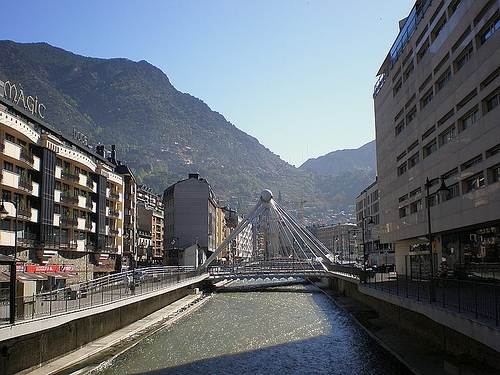
4) Andorra and the Pyrenees
Renting a car allows you to head north two hours through the Cerdanya valley to Andorra with some of the most spectacular mountain terrain on Barcelona’s doorstep.
Made up of seven valleys, Andorra is a microstate and a principality on the border of Spain and France where residents of the two countries flock to take advantage of this tax-free haven and the clean air. The principality has a large concentration of spas and wellness centers that utilize the pure waters from the mountains. Many residents of Barcelona also flock here during the winter for its famous ski slopes.
The Pyrenees is also a gastronome’s dream for its world-renowned beef, the much-respected l’Alt Urgell soft cheese and for the mushrooms collected in the mountains.
How to Get There
If you don’t feel up to the two-hour drive, take the train to the town of Puigcerdà (Andorra has no train stations), which is only a stone’s throw away from Andorra by bus.
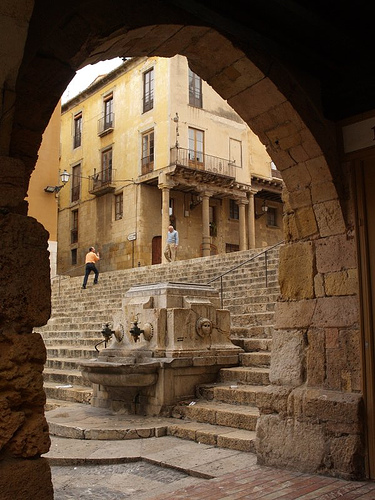
5) Tarragona
Located just 50 miles from Barcelona, the history of Tarragona is a melting pot of different cultures as a result of being invaded over its long history. Today, the town is a World Heritage Site due to the remaining Roman infrastructure left over from the Roman rule over 2,000 years ago. Known at Tarraco, it was a major commercial port for the Romans.
These days, Tarragona is famous for two things: food and its international firework display competition. The competition is taken very seriously, attracting professional pyrotechnicians from all corners of the globe. The competition consists of both aerial and sub-aquatic displays.
For food lovers, Tarragona is a major fishing area, producing some of Catalonia’s best seafood. Every year the town holds a Tapas festival (April 19 – May 6), which is considered one of the most important gastronomic festivals in Spain, and which showcases some of the most innovative seafood tapas in Spain.
How to Get There
Tarragona is only one hour away by train from the train station in Barcelona.
By Anthony Bain
[Montserrat Train Station by David Weekly/Flickr; Bahía de Cadaqués by Fernando Jiménez/Flickr; Castell de Subirats by Angela Llop/Flickr; Sitges by VRoig/Flickr; Andorra by Jaume Meneses/Flickr; Catedral de Tarragon by Juan V. Vera del Campo/Flickr]

About the Author
 Anthony’s intrepid writings and accidental ramblings from deepest darkest Barcelona can be found at his blog The Barcelona Review.
Anthony’s intrepid writings and accidental ramblings from deepest darkest Barcelona can be found at his blog The Barcelona Review.
The post Top 5 Day Trips From Barcelona appeared first on The Expeditioner Travel Site.
]]>The post The Secret Guide To Barcelona appeared first on The Expeditioner Travel Site.
]]>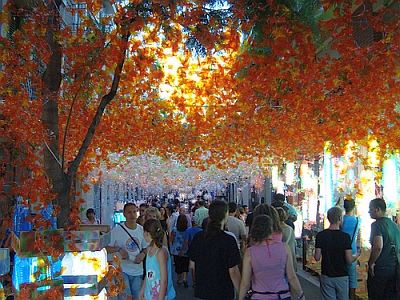
There is something about Barcelona that brings out the intrepid adventurer in travelers. Maybe it’s the long narrow passages that seem to disappear around dark corners that arouses the explorer in all of us to want to push further into the unknown.
I have always felt the urge to walk and discover Barcelona on foot, pushing further into the uncharted, discovering what is behind the next corner, and to see what square or small oasis of urban life suddenly reveals itself, forgotten, left to age in peace and quiet without the roar of tourists to trample its delicate offerings.
One day while browsing a book stall at my local market, I discovered something that would change my exploration forever: The Secret Guide to Barcelona by Jose Maria Carandell.
This celebrated Spanish travel writer and journalist’s articles and books pushed boundaries, constantly seeking out the hidden truth in everything, taking a peek through the keyhole to see what lies on the other side.
Carandell took 400 walks across Barcelona to write The Secret guide to Barcelona in his bid to seek out the hidden parts of the city. Published in 1982, every square, bar and corner of the city was visited in order to seek out the undiscovered, the unconventional and overlooked.
Barcelona has changed a lot since then. The 1992 Olympics had a large financial impact on tourism and opened the city up as a major destination. Many of Carandell´s secrets have now been long discovered and form a part of the many wonders that is Barcelona.
However, secrets do still exist there, and if Carandell was alive today, here are some of the sites he would surely visit.
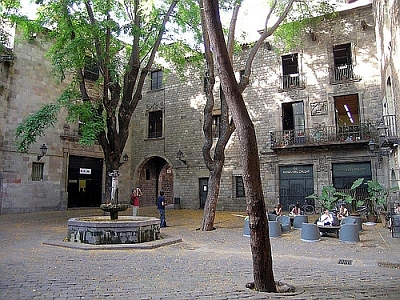 Placa Sant Felip Neri
Placa Sant Felip Neri
Hundreds of squares make up the 10 districts of Barcelona. Some of these squares hide an interesting history.
Settled in a small, quiet square in the Gothic Quarter is Placa Sant Felip Neri, an oasis of quiet in this busy district that is now home to the suave boutique Hotel Neri. Unique in its own architecture, the square is medieval baroque style.
The square is secretly located down a small labyrinth of alleys close to Barcelona cathedral, and was once home to the palace Neri built In 1752. The church was visited daily by Antoni Gaudi to seek peace and quiet. The square contains an octagonal fountain dedicated as a symbol of life, although this quiet square has had a dark past. It was bombarded in 1938 by Franco, and the walls of the square are pockmarked by bullet holes where enemies were executed by Franco´s firing squads once the fascist forces had taken control of the city.
Today, the square still remains the same, a quiet symbol of Barcelona´s dark past and a oasis of secret tranquillity in a bustling area.
El Poblenou
This old fisherman´s district is made up of Mediterranean architecture differing greatly from the gothic and modernist contrasts of other districts in the city. Here you’ll find Plaça Prim, where the daily catches were brought in before being distributed around the city. The square is known for its restaurant El Pescadors due to its classic style approach to cooking fresh fish. The area seems to have been frozen in history still going about the same business as it did at the turn of the 20th century.
Gràcia
Wedged neatly in between the vast Avenida de Diagonal and the grand district of Eixample is the humble district of Gràcia. This area is to Barcelona what Montmartre is to Paris: a social hub for artists and musicians. There is a great cultural contrast between the bohemian elements and the local population still living their day-to-day lives as if the district was still a village in its own right.
Bohemian Gràcia and its many squares interconnect through a labyrinth of small callejuelas that are home to some of Barcelona’s most interesting markets and bars.
Every year in August the district holds a carnival, Festes De Gracia, where each street is decorated in a fierce competition for such converted prizes as “Best Lighting” and “Best Artistic Design.” Every street has a committee working all year round in preparation for the celebration.
Gracia also is home to Barcelona’s art house cinemas where films are shown in their original language. The narrow streets are host to row upon row of bars and restaurants, each more unconventional than the last. Here you’ll also find the infamous plaza, Plaça del Sol, Barcelona’s unofficial headquarters of the anarchist movement, where drinkers and musicians gather until the early hours of the morning.
The Laribal Gardens
During the early part of the 20th century, Barcelona began creating zoning laws with the idea to develop green spaces in the city to combat urban sprawl and free up parts of the city owned by affluent families. This brought in a host of landscape architects eager to leave their mark on the city.
The Laribal Gardens, in the southwest part of the city, was designed by French architect J.C.N. Forestier, and is the largest park space in the city. The characteristic design of the gardens is Arabian with ceramic tiles and ornamental water fountains. The park is full of paths that seemingly lead nowhere and are full of quiet, wisteria-lined terraces.
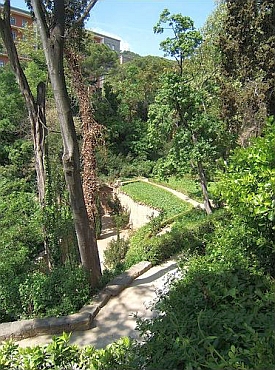 Parc del Laberint d’Horta
Parc del Laberint d’Horta
Parc del Laberint d’Horta is located in the area of Horta, which used to be the residence of a wealthy family whose social status gave birth to the creations they made. The gardens feature a labyrinth desiged in the neoclassical style featuring 750 meters of trimmed cypress trees, romantic gardens, waterfalls and canals filled with carp and fresh water turtles.
Three terraces run up the mountainside featuring statues from Greek mythological figures. At the top is is a neoclassical pavilion.
Built in 1791, the gardens were used a focal point of Barcelona´s high society social functions with views across the city. It was especially popular during the stagnant summer months since the park is blessed with a fresh breezes. In 1967 the gardens were eventually handed over to the city so that they could be opened to the public. During the summer months, the city draws only a few visitors quietly looking to escape the heat and crowds — a secret pocket of neoclassical tranquillity.
Parc de La Creueta del Coll
Parc de La Creueta del Coll is an old quarry in the disrict of Vallcarca that was redesigned as a large outdoor swimming pool with a “Deserted Island” in the middle. The quarry also holds a bizarre 50-ton sculpture that hangs from the quarry walls. There are several terraces that lead up the hillside, and the pool is a well kept secret of the area but open to all.
Parc del Guinardó
Located next to Gaudi´s Parc Güell is the lesser known Parc del Guinardó. During the 16th century, the famous Catalan bandit and Nyerros faction member, Perot Rocaguinarda, lived in a farmhouse in the park. It is believed to contain a labyrinth of secret passages running under the park that took Rocaguinarda and his bandits from the park directly into the Gothic Quarter for criminal escapades.
The group of bandits disappeared from the area using these tunnels while under attack from the viceroy of Barcelona’s troops. Rocaguinarda was indeed so legendary that Miguel Cervantes mentions him in Don Quixote.
At the Park´s peak are several bunkers looking over the city left behind from the civil war. This park has some of the best view over Barcelona, and sitting on the bunker gives a sensation of having Barcelona at your feet.
*
Caradell´s book still holds many undiscovered locations, and during my walks through the city I have taken the routes that Caradell took back in 1982 and found the same places he visited still open and functioning today. As Caradell said, “Barcelona is the kind of city where you can find something without even looking for it.”
By Anthony Bain
[Festes de Gracia by jas_gd/Flickr; Plaça Sant Felip Neri by Neus Prats/Flickr]

About the Author
 Anthony’s intrepid writings and accidental ramblings from deepest darkest Barcelona can be found at his blog The Barcelona Review.
Anthony’s intrepid writings and accidental ramblings from deepest darkest Barcelona can be found at his blog The Barcelona Review.
The post The Secret Guide To Barcelona appeared first on The Expeditioner Travel Site.
]]>The post Barcelona Arenas: From Bullring To Cash Cow appeared first on The Expeditioner Travel Site.
]]>
The Arenas Bullring, Barcelona’s iconic structure, once again felt the roar of the crowd and the tremble of footsteps upon its historic sands this year. However, no bull or matador was present. The bullring has been officially reborn as an entertainment complex. Arenas now houses 115 shops, a cinema and Barcelona’s brand new rock museum, Musel del Rock, adding another feather to the city’s already brimming architectural cap.
At a time when a financial black cloud is looming over Spain, the bullring-turned-mall has seen tremendous success largely due to its location near Plaça Espanya, Barcelona’s emblematic thoroughfare that sees the large majority of traffic to and from the airport. Arenas is also close to Montjuïc, the Museo Nacional d’Art de Catalunya, and the Fira de Barcelona, one of Europe’s most important trade conference centers.
The modifications to the original bullring were done by British Architect Richard Rogers, responsible for Paris’s controversial le Centre Pompidou and London´s Millennium Dome. Arenas was completed in March of 2011, and in its first week the complex received more than 300,000 visitors.
“We set out to re-establish Las Arenas as a 21st-century landmark for the city. This involved retaining the entire existing façade as well as re-integrating what had become an isolated traffic island into the city fabric,” explained Rogers.
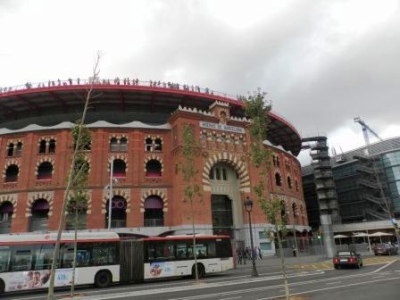
The history of Las Arenas has always been a stormy one. Completed in 1900 in the Neo-Mudéjar (Moorish Revival) style, it set the style for bullrings all over Spain. However, in an ominous sign, within months of opening, Arenas saw its first death. Matador Domingo Del Campo, known under the fighting pseudonym “Dominguin,” was gored to death. The death went down in history giving legend to Arenas.
In 1914 a new bullring was built in Barcelona only a few miles away. Known locally as “El Sport” and officially titled “Monumental,” the bullring was considered more modern and better equipped. Las Arenas continued to function as a bullring until the Spanish Civil War when it became a republication guard headquarters. Arenas saw its last bullfight in 1977. Afterward, all bullfighting in Barcelona was officially moved to the Monumental Bullring and Arenas was completely abandoned.
During the 1992 Olympic Games in Barcelona, the government tried many times without success to do something with the vacant structure, including a negotiation with the local conference center. No deal was struck and Arenas sat for more than two decades in slow decay, forgotten in a city racing into the 21st century.
But, as Ernest Hemingway once said, “Bullfighting is the only art in which the artist is in danger of death and in which the degree of brilliance in the performance is left to the fighter’s honor.” Not only could this be applied to bullfighting but to Arenas itself. In 2010 plans were drawn up for new modernist concept to be given to the bullring as a mall to complement the already thriving Plaça Espanya.
Ironically enough Monumental Bullring is in its last days. Catalonia banned Bullfighting in 2010 and Monument’s increasingly low turnouts mean that it will hold the last of Catalonia’s corridas in 2012, following which it will be turned into a small concert arena and bullfighting museum.
The future of Arenas looks rosy as it thrives with increasing numbers drawn to its “Plaza in the Sky” with 360-degree views over Barcelona and modern shopping experience. In a financially dark climate, Las Arenas is proof that success stories do exist and Barcelona is the city to reinvent them.
By Anthony Bain

About the Author
 Anthony’s intrepid writings and accidental ramblings from deepest darkest Barcelona can be found at his blog The Barcelona Review.
Anthony’s intrepid writings and accidental ramblings from deepest darkest Barcelona can be found at his blog The Barcelona Review.
The post Barcelona Arenas: From Bullring To Cash Cow appeared first on The Expeditioner Travel Site.
]]>The post Amazing Barcelona Timelapse [Video] appeared first on The Expeditioner Travel Site.
]]>Xavier Gill — who apparently met Woody Allen sometime recently as evidenced by his profile picture on Vimeo — brings us this epic timelapse video from one of our favorite cities in the world, Barcelona.
If nothing else, watch for the shot at 1:11 when the full moon rises above the Mediterranean and fully illuminates La Sagrada Familia below — simply amazing.
The post Amazing Barcelona Timelapse [Video] appeared first on The Expeditioner Travel Site.
]]>The post Speaking Easy, Eating Clandestinely In Barcelona appeared first on The Expeditioner Travel Site.
]]>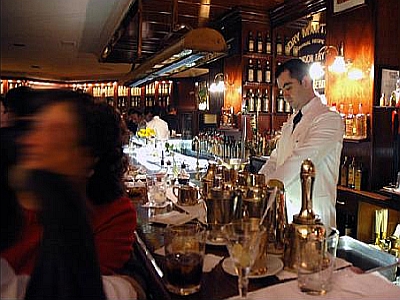
Clandestine dining finds its roots in the United States back in the Jazz days of the ’30s. During prohibition, illegal bars in the country flourished and became known as speakeasies, a term coined from bar owners having to admonish loud, drunken customers when they became too rowdy by asking them to “speak easy, boys.”
In Europe, the trend is on the rise. The fact that restaurants in Barcelona are relatively inexpensive and provide excellent cuisine means that supper clubs are still few and far between. However, clandestine dining is on the rise as discerning gastronomes are increasingly looking for new dining experiences.
SUPPER CLUBS
The concept of the supper club is simple: You are “invited” by the chef to a pre-arranged location (usually organized via the internet) where you dine according to a preset menu. The whole arrangement has an intimate feel; more like a dinner party than restaurant dining. In some parts of Europe, supper club competition is fierce, with many chefs having been trained professionally and boasting resumes including Michelin-starred restaurants.
In Barcelona, there are several well-established supper clubs geared towards giving the diner an experience that can’t be replicated in a restaurant.
 1) Jezebel’s Clandestine Dining
1) Jezebel’s Clandestine Dining
Jezebel’s regularly organizes events, frequently changing location and menus. It describes its dining experience as “Hidden adventures for intrepid gastronomes and hungry rogues,” with a style mixing New American, Cajun and Creole. The chef and creator Kathleen Engelhardt characterizes Jezebel’s as a prelude to bigger things to come. “[Jezebel’s is a warm-up to] an actual wine bar I plan to open later this year. I will experiment with different plates and wine combinations to find the perfect matches. Obviously, the best will make it to the actual wine bar, and hopefully, along the way, I will meet really interesting people. I like the concept of an intimate evening with strangers, but I do think I will have it more focused on one item of food or wine.”
The general themes of Jezebel’s changes frequently. “I do have a clear vision of my style and what I want to bring to Barcelona,” says Engelhardt. “I see this city changing before my eyes, and I am really excited about the possibilities.” This month will include Caribbean night featuring such dishes as crab mousse, sweet potato linguine and coca mustard with summer vegetables. Dinners are regularly organized every month.
2) Kokun Gastronomic Social Club
Kokun is located in the trendy district of Gracia and follows the school of “bio-cooking.” Its daring slogan, “Life is too short to waste it eating and drinking badly,” shows how dedicated chef Xavi Moreno is to using the most natural ingredients possible in his creations, making his own homemade bread and cooking local seasonal Catalan and Basque dishes.
Kokun offers a miniature tasting menu with a multitude of small dishes including gratinated oysters, tuna tartare and Basque-style cod in an alioli sauce. The strawberry and violet tarts are legendary and have been gaining popularity within the supper club community.
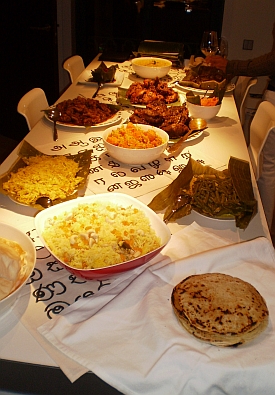 3) Mount Lavinia
3) Mount Lavinia
Mount Lavinia is located in the heart of Barcelona’s Modernist district and specializes in gourmet Sri Lankan food. Its creator, Faraaj Hashim, became disillusioned with Asian food in the city and decided to open up his own supper club dedicated to authentic Sri Lankan cuisine. “The culture of Asian food in Barcelona tends to be modified or diluted to the Spanish palette. I really wanted to give the city real Asian food as you would eat in anyone’s house in Sri Lanka without holding back on taste or on spice.”
“This is something I could never do in a restaurant,” explains Hashim. “Not only do I bring people together at my dinner table, I educate them. I open their eyes and taste buds to a whole new experience.” Diners can expect to indulge in beef or chicken cooked on a slow fire with a mix of ginger and coconut milk with a base of curry and toasted coriander seeds, or tuna cooked in a mix of tamarind ginger vinegar, sugar and black pepper mildly baked in a banana leaf. Its signature dish is a Sri Lankan delicacy: Chili crab cooked in an onion sauce with Pol Sambol — a grated coconut mixture with onions, chopped green chillies and lime.
Mount Lavinia regulary holds “curry corner” dinners and can be contacted via their Facebook page.
CLANDESTINE RESTAURANTS
There are many Clandestine restaurants dotted around the city, most of which are completely legal. Their secret locations serves to give an air of exclusivity to their clientele. In some cases it may be no more than a gimmick, but clandestine dining has still become very much the fashion in Barcelona.
4) La Tintorería Dontell
Its name (Don’t Tell) is a hint as to what’s inside. Located within what appears to be a dry cleaners, to gain access to La Tintorería Dontell, a scanner first reads diners’ index finger which then opens a door to the avant-garde restaurant behind. They serve such delights as avocado and shrimp in martini with a herb salad and turbot taco with asparagus.
To get in you need to be a registered member or be accompanied by someone who is. The restaurant is part of an association called Urban Secrets, a secret dining community that regularly organizes gastronomic nights, wine tastings and secret concerts. The customary way to become a new member is by invitation. However, you can contact the organization via their website for information or to request an invite.
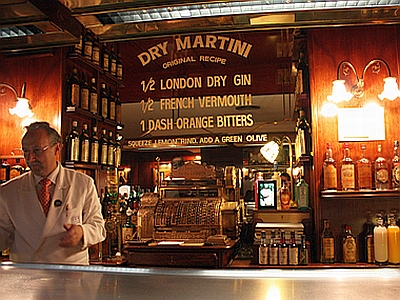 5) The Dry Martini
5) The Dry Martini
The Dry Martini is a monument dedicated to the bygone days of prohibition in the United States. A password that changes monthly will get you into the clandestine restaurant Speakeasy del Dry Martini — described as a “discreet eatery” — that is connected to the bar. The restaurant is the brain child of famous cocktail entrepreneur Javier de las Muelas, the so-called Ferran Adria of cocktails.
“I wanted to pay tribute to the era of prohibition in the United States by creating a speakeasy here in Barcelona,” explains de las Muelas when asked about his inspiration. The menu is extravagant and hosts wines from all over the world. Dishes include tuna in tempura with wasabi mayonnaise, and scallop curry and squid in chocolate sauce. Expect a high-end clientele when dining there, as the restaurant is popular with politicians and businessmen eager to impress and conduct business in a private setting.
6) Dopo Restaurant
Dopo has no telephone for reservations, therefore, to get in, you need to be invited by a member. Conveniently, when you finally do go, you are given the chef’s personal telephone number for future access — like Fight Club but with Italian food. Located behind the not-so-secret and renowned eatery Saltimbocca, the two restaurants share the same chef, Jordi Vila, who’s well known for his Italian creations.
El Dopo caters to the fearless diner wishing to experience something more. Notable dishes include sea urchin pasta, but what really puts this restaurant on the culinary map are its pizzas, a combination of new and old world Italian cooking. Ingredients include tomato, spicy sausage, figs, goat cheese, orange and mint. If you don’t have an “in,” try obtaining reservations through Saltimbocca — it’s worth a shot.
7) Dans le Noir?
Dans le Noir? is less of a clandestine restaurant and more of a social experiment. If there ever was something new to offer the intrepid diner this is it. French for “In the dark?”, the waiters at Dans le Noir? are legally blind and act as a guide to the diners who eat in complete darkness. You most likely will not even be sure what you’re eating, but as far as unique experiences go, you’re in for a real treat. The purpose of the admittedly gimmicky idea is that when eating in the dark, your sense of taste and smell will be heightened, allowing for enjoyment of food in a new environment and more fluid social interactivity. They regularly organize blind wine and cheese tastings.
8) Mutis
The granddaddy of them all in the world of clandestine dining, Mutis is considered the holy grail of clandestine eating in Barcelona. Known as “The restaurant that does not exist,” it is a creation by Michelin-starred chefs the Torres twins (Sergio and Javier Torres), and here they feature decadent offerings including half-kilo-sized steaks, lobster salads with green apple vinaigrette, and fried egg carpaccio.
Inside, the restaurant’s design is based on a British gentlemen’s club of the Victorian era, complete with velvet chairs and candle lighting. Access is invitation-only by current members, but given the prices, don’t expect to have much money left over for frequent repeat visits. The exact location is a well-kept secret, but it is rumored to be close to Bar Mut on Avenida Diagonal.
By Anthony Bain
Jezebels Clandestine Dining
jezebelsclandestinedining.com
Kokun Gastronomic Social Club
Fraternitat 23, 2º Piso (Gràcia)
Kokun.es
Mount Lavinia
Rambla Catalunya
Mount-Lavinia.com or Facebook.com/Mount.Lavinia
La Tintorería Dontell
Carrer d’Aribau, 55
Tintorera Dontell.com
The Dry Martini
Calle, Aribau, 162
DryMartiniBCN.com
Dopo Restaurant
Calle, Loreto, 26
Dans le Noir?
Paseo Picasso, 10
DansleNoir.com
Mutis
Avda. Diagonal 438

About the Author
 Anthony’s intrepid writings and accidental ramblings from deepest darkest Barcelona can be found at his blog The Barcelona Review.
Anthony’s intrepid writings and accidental ramblings from deepest darkest Barcelona can be found at his blog The Barcelona Review.
The post Speaking Easy, Eating Clandestinely In Barcelona appeared first on The Expeditioner Travel Site.
]]>The post I’m Not Sad To See Bullfighting Go In Spain appeared first on The Expeditioner Travel Site.
]]>
Allow me to first clarify that I am not a radical animal rights activist. The idea of chucking red paint on a fur coat is not only unappealing and a destruction of personal property but, heck, plain old impolite. Hyper-radical political movements, while they sometimes achieve change, usually result in repulsion rather than legislation.
Take PETA (People for the Ethical Treatment of Animals) for example. This group, while its intentions are fundamentally admirable, has been known to make their poor interns strip down to beige underwear, crawl into human-sized Styrofoam flank steak packages, and cover themselves in red paint — a sensational (not sensational as in awesome, sensational as in, oh this nasty image is appealing to my sense of the gag reflex) commentary on animal cruelty and the mass meat market. Spanish animal rights activists used these extreme types of tactics to combat bullfighting in Catalonia, culminating in last year’s vote by the Catalonian government to ban bullfighting after 2012.
Speaking as an American, bullfighting is an activity that we intrinsically associate with Spain. Our third grade history textbook had huge color photographs of the glorified matador, and our elementary school Multicultural Day infallibly had at least one of the traditional red-garbed figures singing along onstage next to the horribly stereotypical Native American and Japanese Geisha. Indeed, viewed from afar, the act of bullfighting is sewn deeply into Spanish culture.
But in modern times, is bullfighting really a hallmark of Catalonian identity, or has it been hanging onto the rapidly fraying thread of tourist amusement and patronage?
The Financial Times recently took a look at the modern day bullfighting scene with a sad and deflated voice. When describing the matador after the fight, they noted, “For a moment he is a Joselito; a god. Then they reach their van — no more than an aging blue minibus. The god is put down and the matadors climb inside, cramped on its fake leather seats; the door slams shut and the battered bus drives away.” It is apparent that the ritual and beauty described by Hemingway in Death in the Afternoon is lost. The glory and ornamentation dissipates as soon as the stadium is exited.
Personally, I support the end of bullfighting. I suspect the sport (or is it art?) has lost a great deal of the connection it historically had to Spanish culture — a superlative of the country that once had great relevance. And being a vegetarian, I simply cannot prevent myself from bringing up the argument that there is hypocrisy when it comes to banning the animal violence that we can see, while supporting, encouraging and patronizing the death that goes on behind closed doors. Thousands of bulls are killed daily in much harsher environments (factory farms anyone?). But that is a discussion for another time.
So what would the great author say to this eradication of what he perceived to be the greatest of artistic spectacles? Who knows? But maybe Hemingway was on to something when he wrote in Death in the Afternoon, “About morals, I know only that what is moral is what you feel good after and what is immoral is what you feel bad after.”
[Bullfighting by JuanJ/Flickr]

About the Author
 Jenna Blumenfeld, (Jenna Ogden Blumenfeld when she’s in really big trouble) hails from the wee state of Connecticut. Although her childhood dream of becoming a bug doctor — with a specialization in ladybugs — has gone unfulfilled, she is content writing about travel, cuisine and culture. A vegetarian, she currently resides in the food hub of Boulder, Colorado. Read more of her food-centric writing at NewHope360.com.
Jenna Blumenfeld, (Jenna Ogden Blumenfeld when she’s in really big trouble) hails from the wee state of Connecticut. Although her childhood dream of becoming a bug doctor — with a specialization in ladybugs — has gone unfulfilled, she is content writing about travel, cuisine and culture. A vegetarian, she currently resides in the food hub of Boulder, Colorado. Read more of her food-centric writing at NewHope360.com.
The post I’m Not Sad To See Bullfighting Go In Spain appeared first on The Expeditioner Travel Site.
]]>The post Sidetracked In The Pyrenees appeared first on The Expeditioner Travel Site.
]]>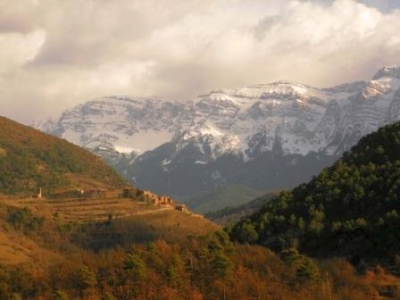
Shifting into fourth gear I started to wonder if the world was coming to an end. The ray of sunshine shadowing my car had gone, suddenly replaced by a large black cloud that loomed almost directly over head. A shot of lightning streaked across the horizon followed by an earth-shattering boom. The heavens broke and rain clattered down on the windscreen.
I pulled over in the nearby rest area, expecting the worst. Before I had a chance to turn on the windshield wipers, the cloud burst had ceased. I exited the car to survey the sky and found myself looking out into the most awe-inspiring Turneresque landscape. I stood transfixed. A single ray of sunshine penetrated the cloudy sky, lighting up a small remote village perched upon the mountain top. It stood in true rustic glory as it has for over 100 years. I had to pinch myself. Yes, I really was in the Pyrenees.
Our goal: Barcelona to Andorra for a dinner reservation in one of the principality’s most renowned restaurants, a reservation which was now becoming an increasingly difficult task. Cable cars, funicular railways, a Benedictine abbey and, finally, a guilt-ridden after-lunch walk to the peak of Montserrat — Catalonia’s most emblematic mountain chains — did absolutely nothing for our punctuality.
Later on in the day, making terrible time in the Cerdanya Valley with an ever-increasing haste, we motored round the next mountain and another Kodak moment presented itself.
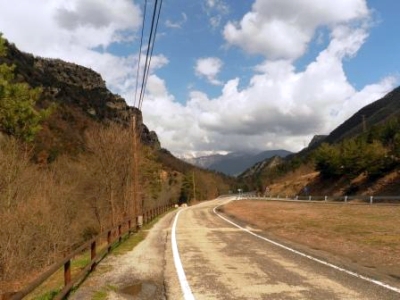 Like mountain view paparazzi we stood on line with group of day trippers and jostled for photos. “Oooh” sighed a heavyset Russian man next to us. “This is just like IMAX,” he remarked, his eyes never straying from the camera viewfinder.
Like mountain view paparazzi we stood on line with group of day trippers and jostled for photos. “Oooh” sighed a heavyset Russian man next to us. “This is just like IMAX,” he remarked, his eyes never straying from the camera viewfinder.
Every so often we pulled over to play our newfound game: “Spot the hidden village.” In between valleys and mountains, a small hamlet or random church would appear in the distance, leaving us wondering what life would be like in amongst the clouds.
Bewilderment kicked in when it began to rain heavily as we entered the Tùnel de Cadí only to find clear sky and sunshine on the way out. This happened more than once as we threaded our way through the Pyrenean road tunnels.
As we neared Andorra, the last of the spring snow could be seen at the top of the rising peaks. Every so often rustic taverns reminded us our dinner appointment was edging increasingly closer. Once we had made it to Puigcerdà — one of the largest towns in the Pyrenees — we knew we were almost there. Radio Andorra signaled us in Spanish, Catalan and French, and it wasn’t long before the twisting mountain roads rolled out into Andorra.
After a frantic last-ditch attempt to find our dinner reservation, and with only seconds to spare, we made it, and all we could do was sit in the restaurant’s exquisite dining room, giggling, drunk on pure sensory overload.
By Anthony Bain

About the Author
 Anthony’s intrepid writings and accidental ramblings from deepest darkest Barcelona can be found at his blog The Barcelona Review.
Anthony’s intrepid writings and accidental ramblings from deepest darkest Barcelona can be found at his blog The Barcelona Review.
The post Sidetracked In The Pyrenees appeared first on The Expeditioner Travel Site.
]]>The post Mercat de Santa Caterina: Barcelona’s Best Untouristy Market appeared first on The Expeditioner Travel Site.
]]>
As anyone who has visited La Boqueria knows, the famed market in Barecelona located just off Las Ramblas is not just one of the city’s most well-known destinations, but also one of its most touristy. Sure, if you get there around 5 a.m. before the visitors wake up, you’ll likely be the only non-Spainard wadering amongst the butchers, fishmongers and specialty food sellers (as Matt Gross wrote about as the Frugal Traveler a few years back).
But any other time, the market is packed with, as David Farley notes in his recent article for Gadling, “more Tiva-sandle-clad, khaki-shorts-wearing tourists than at a Dave Mathews concert.” For a more authentic experience, Farley suggests heading a short walk away to the Mercat de Santa Caterina in La Ribera.
Noted as a colorful centerpiece of the vibrant resurgence of the neighborhood, the market, with its distinctly designed roof, has been around since 1848, and will offer a more authentic market experience in the city. Of course, you’ll have to find another topic of conversation during lunch than making fun of tourists, but that’s the cost of getting off the beaten path.
[Mercat de Santa Caterina by Calín Semaan/Flickr]
The post Mercat de Santa Caterina: Barcelona’s Best Untouristy Market appeared first on The Expeditioner Travel Site.
]]>The post Images Of Barcelona appeared first on The Expeditioner Travel Site.
]]>
Perhaps no other city in the world is so inexorably linked to one architect than Barcelona is to Gaudí, whose La Pedrera (or Casa Milà) was his last work before concentrating the rest of his life (16 years) to the Sagrada Familia. Rumor has it that George Lucas’s costume designers based the image of Darth Vader on the chimney sculptures on the building’s roof.

It is hard to imagine that just 20 years ago Port Vell, Barcelona’s scenic and active port, was nothing more than a run-down leftover from the city’s industrial past. However, ahead of the 1992 Olympics, as part of the city’s miraculous makeover, Port Vell and the surrounding area was transformed into a marina, pedestrian walkway, and entertainment center, and is now a bustling gateway to the city’s beachfront and a destination in it of itself.



Not limited to just buildings, Gaudí was commissioned in 1900 by the wealthy industrialist Eusebi Guëll to create an urban oasis in the style of British garden villages. Sprawling over 42 acres of then remote hillside overlooking the city, Parc Guëll itself was a failure in the sense that the village never materialized. However, what remains today is one of the most iconic landmarks of any city.
The “Hansel and Gretel” houses welcome visitors as they enter the park, followed by a winding staircase that leads to a expansive plaza (supported by 86 columns below), the Gran Placa Circular, bordered by a famed serpentine bench covered in a mosaic of colorful tiles. From this vantage point, the park offers unparalleled views of the city below and the Mediterranean Sea in the distance.
For true urban explorers, keep in mind that the Gaudí portion of the ground makes up only a small fraction of the park. Follow the paths that lead upward from the plaza for even better views of the city. (And if you have hiking shoes on, or are oblivious to pain to your feet like I am, head even further up the hillside to reach the pinnacle of the park.)

Plaça Reial, or Royal Plaza, located just off the southern portion of Las Ramblas, was once part of a convent. Today, it is one of the city’s most well-known plazas (and biggest), and is home to two Gaudí-designed lampposts. (This was his first and only commission by the city. A dispute over money arose after completion and he vowed to never work for the city again).

Sitting on the edge of Montjuïc — the immense hill that was home to most of the 1992 Olympic events — The National Art Museum of Catalonia was designed in the neobaroque style for the 1929 World Exhibition. From the perch of its main steps, visitors can listen to classical guitar being performed while taking in views of Plaza España and beyond.


Though the Catholic Church may have some objections, the closest thing to a unified religion in Barcelona is food. Catalonia is home to famed chef Ferran Adrià and his protégés, and the region and city are universally recognized as being at the forefront of the the evolution of dining.
On pretty much every corner of the city you will stumble upon someplace serving tapas, whether it be in the traditional style, served simply along with a drink, or in a fine-dining style. Barcelona is also home to the famed market La Boqueria, a market that can date its history to the Middle Ages. Today, you’re more likely to find overpriced Chorizo or Australian tourists than you are to experience a true market experience, but the smells of curing meats and aged cheeses that waft over the aisles as you explore the market are worth your time alone.

Remember that part about food being the closest thing to a religion in Barcelona? Scratch that. Here at Camp Nou, the nearly 100,000-person capacity stadium home to FC Barcelona, Barcelonins make the pilgrimage to this sacred site to worship at the feet of star footballer Lionel Messi and his teammates whose club is one of the best in the world (Real Madrid fans may have issue with that statement).
Come game day, the city buzzes with anticipation, and you can forget about doing much while a match is going, as everyone becomes glued to the TV and radio. Simply accept this fact, slip into a bar, and order an Estrella beer and enjoy the religious service like a true convert.

One thing I noticed before I traveled to the city was that people would always say, “I was in Barcelona,” or “I love Barcelona.” They would never say “I was in Spain” or “I love Spain,” to describe their trip. Catalans love their home region, and take pride in their unique culture, and this attitude creeps into travelers’ minds as well.
It’s rare that I visit a city where it feels like everyone I talk to has been as well, but even just a week spent there reveals why. There is something special about this Mediterranean city that has drawn visitors dating back to the days the Romans left the confines of their city. The city has had its ups and downs, and with the current problems facing the country today, the future is unclear. But this much is true: Barcelona will forever capture something unique in the minds of all that step foot on its streets.
By Matt Stabile

About the Author
 Matt Stabile runs TheExpeditioner.com. You can read his writings, see his videos, purchase the book he co-edited, or contact him via email at any time at TheExpeditioner.com. He also kind of wishes he was in Barcelona right now.
Matt Stabile runs TheExpeditioner.com. You can read his writings, see his videos, purchase the book he co-edited, or contact him via email at any time at TheExpeditioner.com. He also kind of wishes he was in Barcelona right now.
The post Images Of Barcelona appeared first on The Expeditioner Travel Site.
]]>The post Barcelona Food: Worth Waiting Up Late To Eat appeared first on The Expeditioner Travel Site.
]]>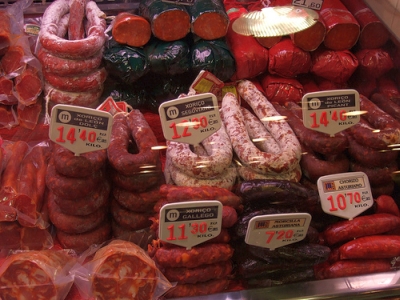
Is it me or do you notice how there seems to be an onslaught of articles published about a destination you’re traveling to just before you go? I understand, this is completely unscientific, irrational, and probably a tad ego-centric to think this, but I swear, there are some sort of travel writing gurus in the cosmos that seem to be very good at doing this before every trip.
My trek to Barcelona is 17 days away (but who’s counting?), and I’ve run into guides for the best rooftops in Barcelona, videos about everything from proper beach etiquette in the city to a guide to Park Guell, as well as this recent guide from BootsnAll to the best eats around town for a true taste of Catalan cuisine.
Some favorites include Tortilla de Patatas, a devilishly simple dish consisting of a heart-stopping number of eggs whipped up into a thick omelet and filled with fried potatoes and onions — and like some of the great foods in the world, most likely a product of peasants making do with what little food they had — and botifarra, a sausage that is a favorite in Catalan.
[La Boqueria 08 by Aidan Brooks/Flickr]
The post Barcelona Food: Worth Waiting Up Late To Eat appeared first on The Expeditioner Travel Site.
]]>The post This Is Why You Want To Visit Gracia In Barcelona appeared first on The Expeditioner Travel Site.
]]>
Gràcia, smack in the middle of Barcelona, wasn’t always just a district in the city, but was once its own village, and as the NY Times points out in their recent photo essay on the ‘hood, “it’s never lost that village feeling and remains a jumble of narrow streets and tree-shaded plazas dotted with Art Nouveau architecture.”
And if you happen to be there right now instead of your bland cubicle (which, given it’s August, is not entirely implausible), you’ll see that the Festa Major de Gràcia is in full swing, an annual festival beginning on August 15 where the neighborhood is taken over by parade-goers, food stands and live music. And, as can seen above, every year the streets are decorated with a different theme by residents of other neighborhoods in a friendly competition. For a full list of events, check out their official site (how’s your Catalan?).
[image by anonymous/Flickr]
The post This Is Why You Want To Visit Gracia In Barcelona appeared first on The Expeditioner Travel Site.
]]>The post When In Barcelona, Please Stay In Your Designated Lane appeared first on The Expeditioner Travel Site.
]]>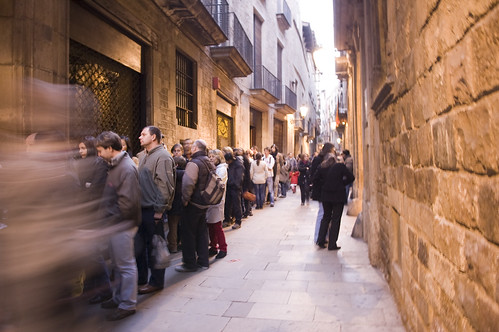
Some let their frustrations out through screaming, others by crying or pouting silently in a corner. In Barcelona, one pissed-off Catalan graffiti artist lets his frustrations out by painting the streets of the Gothic Quarter creating lanes: one labeled “tourists,” the other labeled “normal” for the locals.
It is no secret that “The City of Counts” can be obnoxiously crowded depending on the time of year and where one heads. Most travelers and local residents expect to be grazed by sweaty shoulders or stepped on by an awed tourist at one time or another, accepting the uncomfortable situation as a typical day in Barcelona — until now. In a recent article, The NZ Herald reported that this mysterious graffiti artist creates these “lines of separation” during the darkness of night to send a clear message to visitors: stay away.
Each morning, city workers paint over the lanes in hopes that the smeared dividers won’t scare travelers from occupying the coveted Gothic Quarter. The spectacle has drawn much attention to problems of increasing tourism — an upsurge of 15 percent is predicted for 2011 — worrying government officials that the upturn may be a turn-off.
Disgruntled residents are expressing frustration over the commercialization of their community and are speaking up about it. “We cannot put up with much more of this in the neighbourhood,” Maria Mas, president of the old quarter residents’ association, told the paper. The association’s concern is that people will begin to move out, threatening the preservation of an eclectic community.
Each time I travel I am summoned by the roaring whistle of the guilt train. Being drawn to extrinsic destinations that offer ethereal encounters with the natural world, I cannot help but feel that my “footprint” adds to the breakdown of vulnerable communities. When visiting developed cities, I search for “off the beaten path” experiences to escape the fervor, never considering how harried the locals themselves probably feel.
The fact of the matter is that tourism — if conducted in a sustainable, organized matter — is vital to many countries’ economies. It creates an important source of revenue, promotes cultural awareness, and develops global interconnectedness. Unfortunately, greed has caused the exploitation and break-down of desirable locations making it more and more difficult to conduct responsible business practices. Barcelona is one of many cities that may have to rethink the way it welcomes its guests.
Who knows, maybe this surreptitious protester has figured out the catalyst for change: speak up — or graffiti — and start a revolution?
By Maria Russo

About the Author
 Maria Russo is a freelance writer who loves natural wonders, good eats, ethical travel, and boutique hotels. Her work has appeared on the Huffington Post, USA Today.com, People.com and A Luxury Travel Blog, among others.
Maria Russo is a freelance writer who loves natural wonders, good eats, ethical travel, and boutique hotels. Her work has appeared on the Huffington Post, USA Today.com, People.com and A Luxury Travel Blog, among others.
When Maria is not writing for her all-time favorite site (that would be The Expeditioner), she spends her time blogging about foreign jaunts and delectable food experiences for her site: Memoirs of a Travel & Food Addict. She is also up to no good on Twitter (@traveladdictgrl, @expedmaria).
The post When In Barcelona, Please Stay In Your Designated Lane appeared first on The Expeditioner Travel Site.
]]>The post Video: Barcelona — By Skateboard appeared first on The Expeditioner Travel Site.
]]>Come see Barcelona with Danny. You remember Danny, right? My 37-year-old unemployed friend who spends his days in Barcelona drinking coffee, smoking, cigarettes, and skateboarding around the city with nary a care. Yes, I’m jealous.
Enjoy this unique look at Barcelona.
The post Video: Barcelona — By Skateboard appeared first on The Expeditioner Travel Site.
]]>The post This Is Why You Want To Go To Barcelona appeared first on The Expeditioner Travel Site.
]]>Very cool time lapse video of the city. Not recommended for those with motion sickness issues or for those who are inebriated while reading this site (and I know that probably excludes half of the readership).
Beautifully shot epic short of a group exploring Barcelona via skateboard. You know it’s good if the filmmaker can make an airport look amazing (check out the sunrise at 0:17).
And after watching this one, you’ll truly feel like you’ve been there yourself. One criticism, I just don’t think the music works here. My recommendation: queue up this video to play in the background. See, much better. It’s like the travel version of watching “The Wizard of Oz” with “The Dark Side of the Moon.”
The post This Is Why You Want To Go To Barcelona appeared first on The Expeditioner Travel Site.
]]>The post An Insider’s Take On Barcelona appeared first on The Expeditioner Travel Site.
]]>
So you’re one of the 4,427,186 visitors heading to Barcelona this year, but you want a leg up on what’s going on and what to do while in La Ciudad Condal? Check out Barcelona ex-pat blogger David Brydon who “started writing blogging” (I think there’s one too many verbs in there) about Barcelona after seeing a real need for non-guidebook sights.
David recommends snacking on some “pata negra” (cured Iberic ham) while near the Boqueria market; getting lost and wandering around the very walkable old town; and, good god, whatever you do, avoid visiting in August when the temperature rises almost as much as prices do, the locals skip town, and tourists crowd the narrow streets like a bad zombie movie (Dave-O recommends going in either June or September for the La Merçe festival).
For the rest of his tips, including the five must-have websites for local events and what you should put at the top of your list to see, click through here.
The post An Insider’s Take On Barcelona appeared first on The Expeditioner Travel Site.
]]>The post Do Barcelona With No Money appeared first on The Expeditioner Travel Site.
]]>
Is it really possible to do a major European travel destination on the cheap? Is fall a better time to visit Barcelona now that summer is over? Does Woody Allen’s new movie “Vicky Cristina Barcelona” make you want to visit there or does it make you just miss classic ’70’s Woody?
Well it is possible to get by in Barcelona with little money, just follow those same tricks you use anywhere. Grab a meal at one of Barcelona’s 46 food markets like La Boqueria (see above) and you’re still probably eating better than you are back home. For leisurely meals, order the meal of the day (___ del dia) for a prix fixe menu at a basement price. And time your trip over the first Sunday of the month when all city museums are open for free.
A quick run-down of flight prices to Barcelona: New York – $613; Sydney – $1,633; London – $84 (why don’t I live in London, someone please tell me?).
(Click for the article)
The post Do Barcelona With No Money appeared first on The Expeditioner Travel Site.
]]>